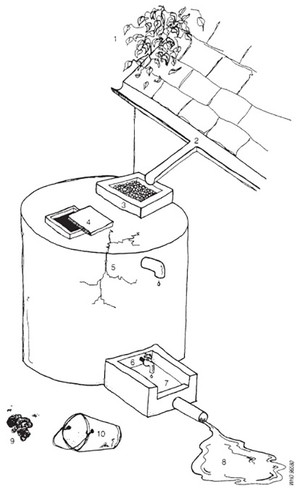As you learned in Study Session 3, rainwater harvesting is appropriate for areas that have a shortage of water sources. It is also practised in urban areas in institutions such as health centres and schools, and in domestic dwellings. While rainwater can be collected through ground catchments and stored in ponds or sand dams (see Section 3.5, in Study Session 3), here you will focus on sanitary inspections of roof catchments.
Rainwater is usually clean, unless the air is polluted by particles or chemicals, which can contaminate the rainwater. These contaminants may be unimportant, however, if the rainwater is used for purposes other than drinking or cooking.
What uses might there be for rainwater in towns, other than for drinking or cooking?
House cleaning, utensil cleaning, vehicle cleaning, washing clothes, bathing and watering plants.
The roof from which rain is collected should be free from contaminants. There also needs to be a clean and well-constructed tank, with no cracks in the sides and an inspection hole with a cover. Figure 12.2 shows what you should look for if you are carrying out a sanitary inspection of rainwater collection, and Box 12.2 has a list of questions to be asked. As before, the numbers in the diagram demonstrate particular points and correspond to the checklist of questions in the box.

Figure 12.2 Rainwater collection and storage. (WHO, 1997)
Questions to be asked during the inspection:
Total number of ‘Yes’ answers = contamination risk score:
9–10 = very high
6–8 = high
3–5 = intermediate
0–2 = low.
Name ______________________
Signature ______________________
Date ______________________